Power Car
Investigating the speed and pulling power of a powered car with different arrangements of gears and wheels.
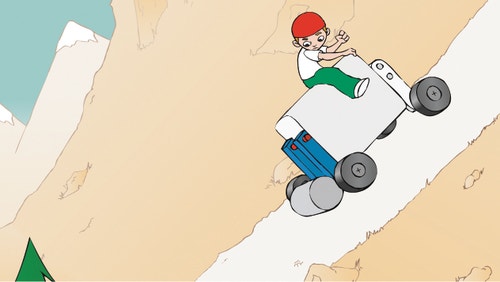
Connect
(5-10 Minutes)
Jack and Jill are out in the hills behind their house testing their Power Car. It’s great fun and a great way for Zog to keep fit too. The car works just fine on level ground but it just can’t seem to climb those hills.
The wheels skid, the motor makes terrible noises, and the front end of the car lifts off the ground.
Jack thinks the car needs to be heavier. Jill thinks the gears are all wrong for going up hills.
How can you make a Power Car that climbs hills?
Let’s find out!
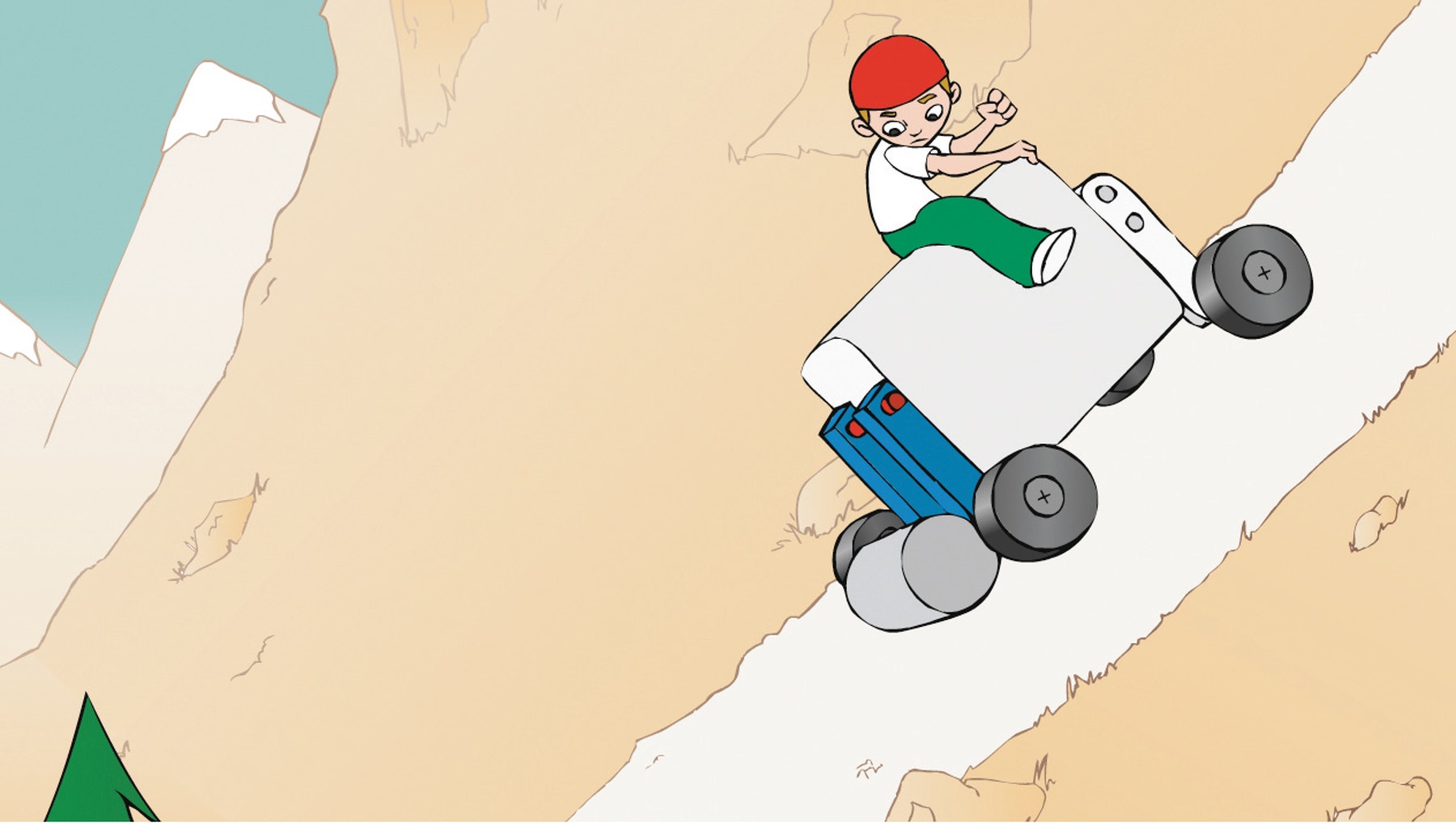
Construct
(20-25 Minutes)
Build the Power Car
(all of book 11A and book 11B to page 9, step 10).
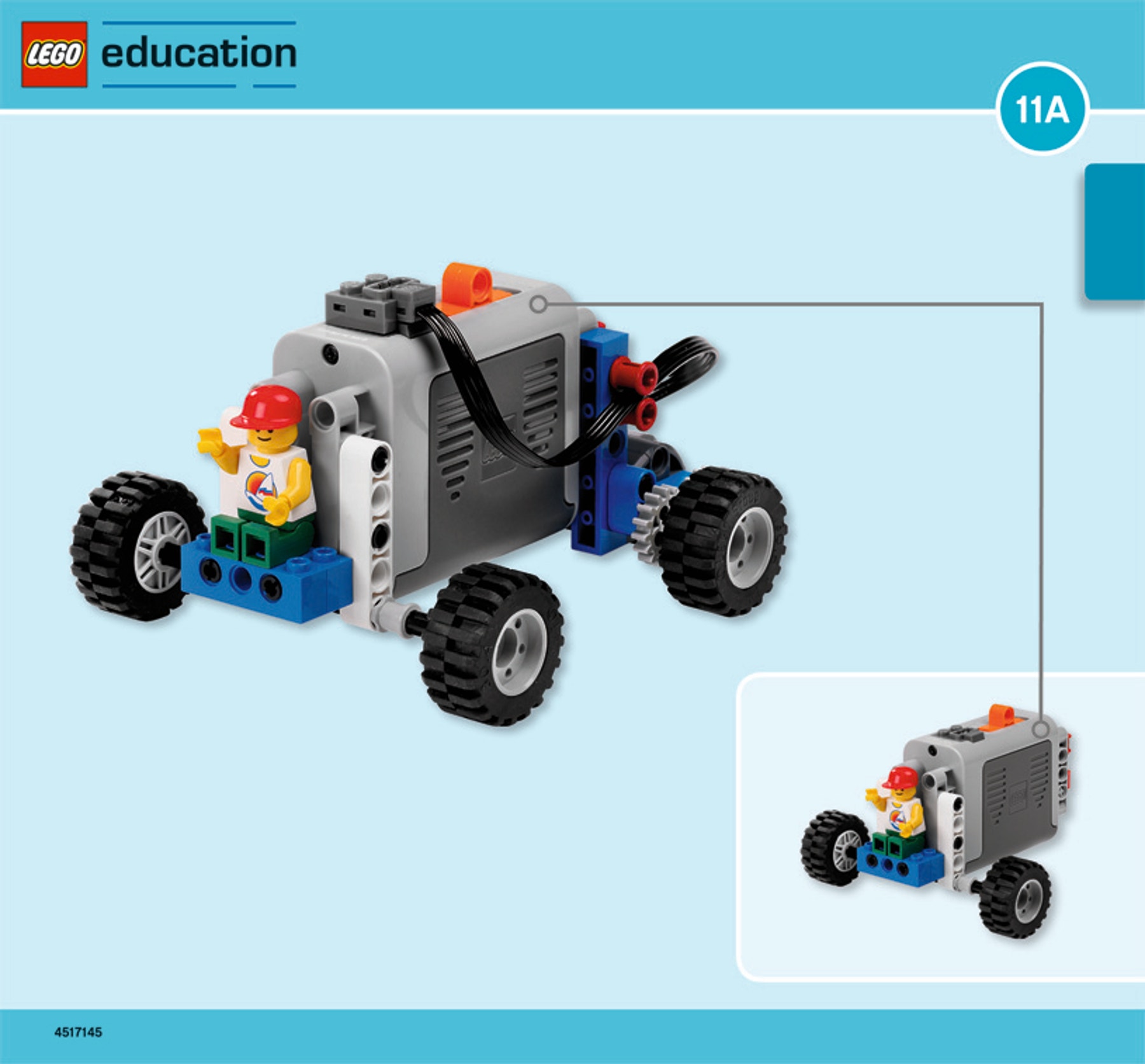
Turn on the motor by pushing the battery box switch forward
Make sure all the wheels turn freely and do not rub on the sides of the Power Car
Build your test hill
Mark a start and finish line on the plank, 2 m apart. Place the plank on an object so the finish line is 50 cm higher than the floor.
Tip
The Power Car can travel very fast, even up hills, so it might be a good idea to put the ramp against the wall in a corner to prevent it going over the edge.
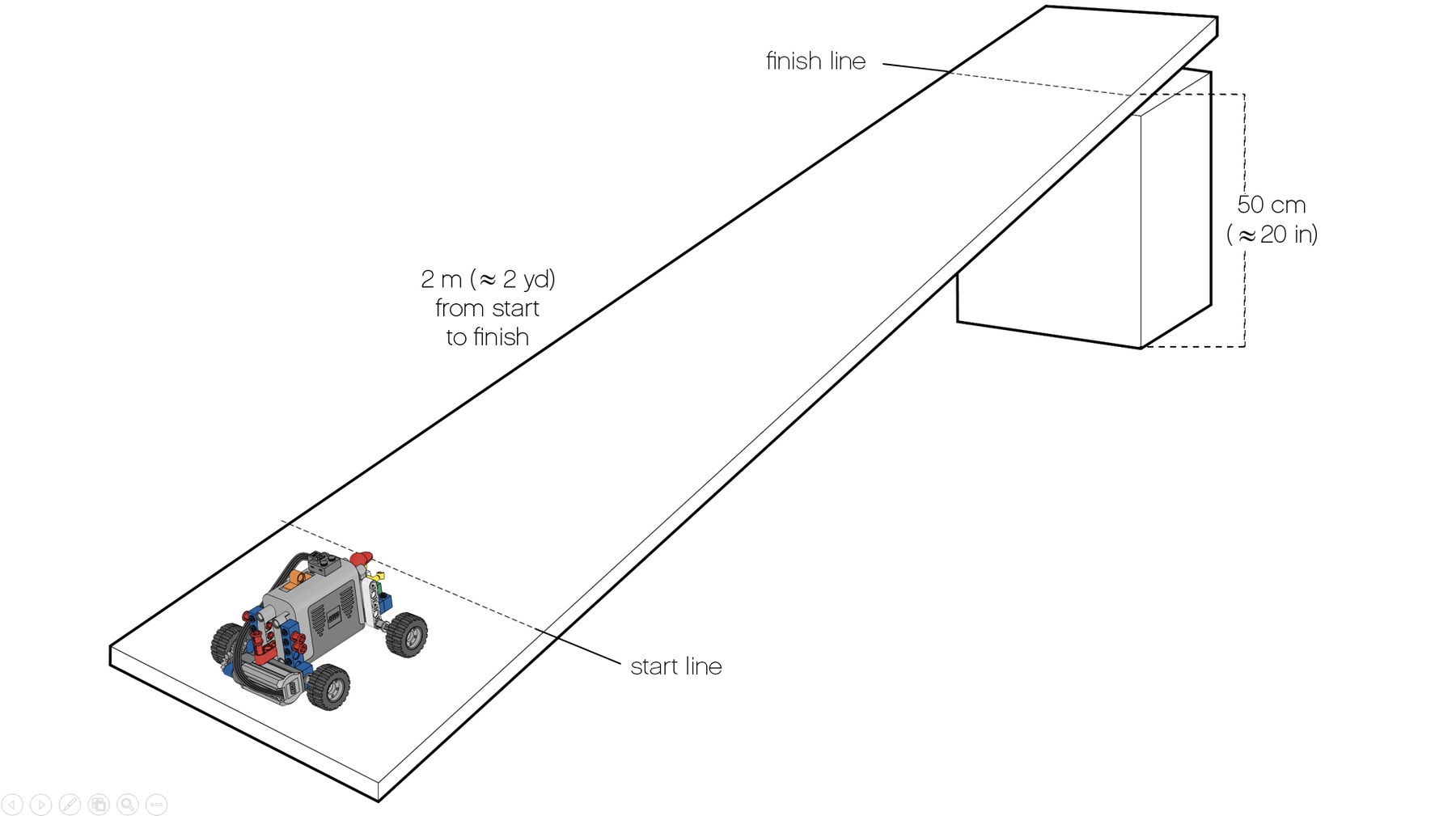
Contemplate
(20-25 minutes)
Which is the fastest uphill power car?
The Power Car needs to be as fast as possible when driving uphill.
First predict how fast Power Car A will travel 2 metres uphill. Then test your prediction. Next, follow the same procedure for Power Cars B, C and D.
Test several times to make sure your results are consistent. Test results may vary depending on surface of the hill.
Power Car A (page 9, step 10) will need approximately 4 seconds to travel 2 m uphill.

Power Car B (page 10, step 11) will need approximately 3 seconds to travel 2 m uphill.

Power Car C (page 11, step 12) will need approximately 10 seconds to travel 2 m uphill.

Power Car D (page 12, step 13) will need approximately 7 seconds to travel 2 m uphill.

The fastest of the four is Power Car B, using big wheels and 1:1 gearing.
Did you know?
The circumference of the small wheel is 9.6 cm
The circumference of the big wheel is 13.6 cm

Optional: How steep a hill?
How steep a hill is your Power Car able to climb? Place the plank on an object so the finish line is 70, 80, 90 or more cm higher than the floor. Test which of the Power Cars A, B, C or D is best at climbing steep hills.
Power Car C can climb the steepest hills.
Continue
(25-30 Minutes)
How strong is your power car?
Build a sledge and attach it to your Power Car using a string around the hook at the rear.

Load the sledge with books.
First predict how heavy a load Power Cars A and C can pull. Then test which Power Car can pull the heaviest load.
Power Car C (page 11, step 12) can pull the heaviest load. Test results may vary, depending on the surface of the test track.

Also try adding counterbalance to the front of the Power Car.
This will keep the front end of the Power Car down and make it more stable.
Tip
Use the weight element as a counterbalance.
Try different combinations of wheels and gearing to achieve the best pulling power.
How heavy a load can your best Power Car pull?
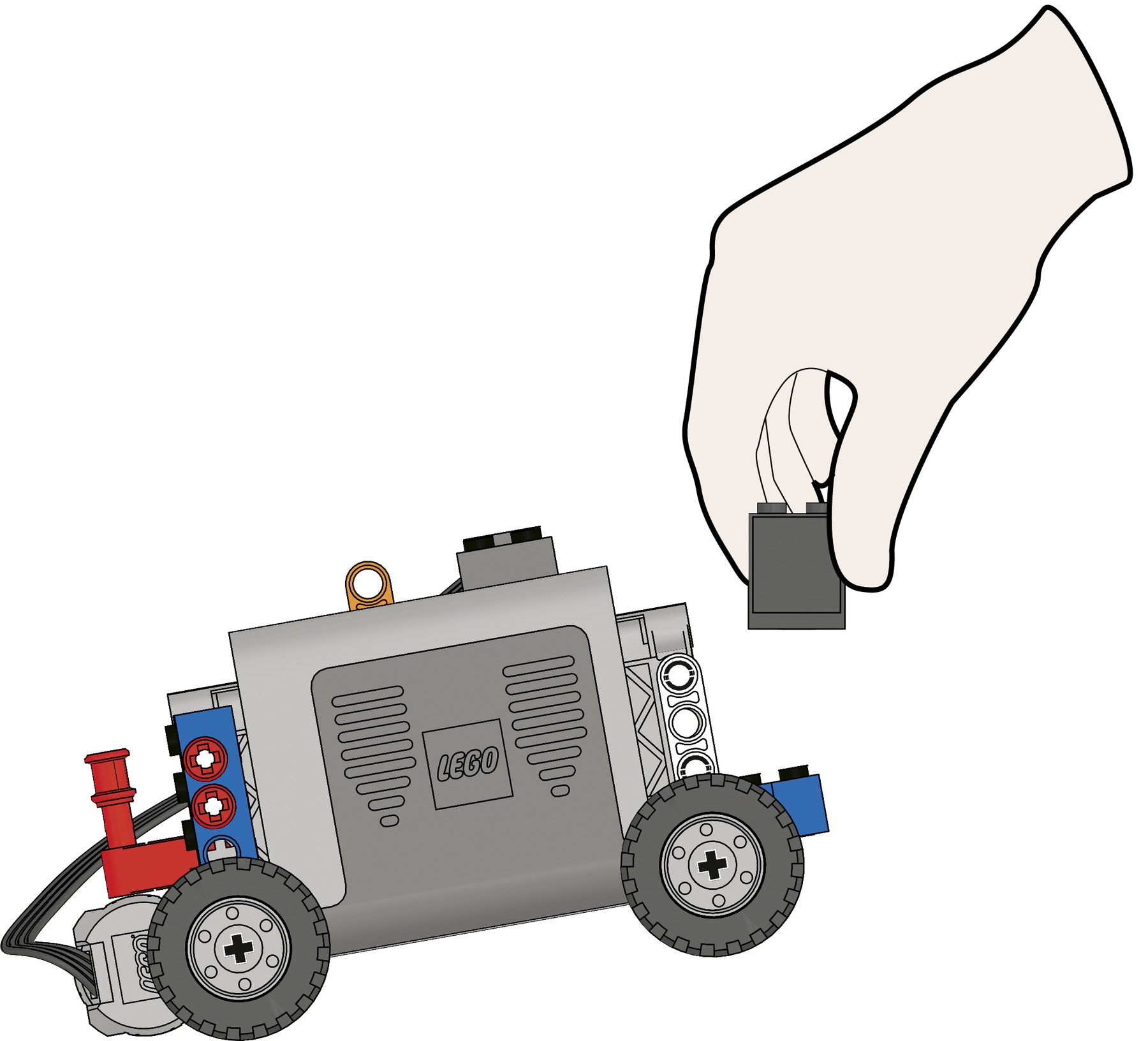
Teacher Support
Students will explore the concepts of:
Combining components
Gears
Wheels
Friction
Measuring distance, time and force
Scientific investigation
9686 Simple & Powered Machines Set (one set per two students is recommended)
Metre rule or measuring tape
Plank – 240 cm or longer
Small books or other objects to make a load
Stopwatch or timer
Pupil Material
Share with:
 Google Classroom
Google Classroom



